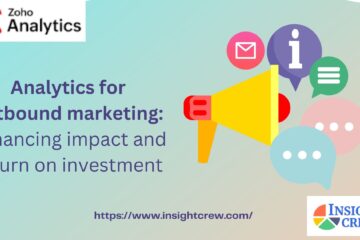The healthcare sector is changing thanks to augmented analytics, which offers sophisticated data analytics capabilities that enable healthcare organisations to extract insightful information from massive data sets. This is the way that augmented analytics is changing the medical field.
Improved Patient Care: By enabling healthcare providers to analyse patient data more effectively, augmented analytics can improve patient outcomes, diagnosis, and treatment planning. Healthcare providers can find patterns and trends in patient data to help them make better decisions regarding patient care by utilising machine learning and predictive analytics.
Enhanced Operational Efficiency: Electronic health records (EHR), medical imaging, wearable technology, and Internet of Things (IoT) sensors are just a few types of data healthcare organisations generate. Through effective data analysis made possible by augmented analytics, healthcare managers may optimise resource allocation, cut expenses, and enhance workflow procedures.
Personalised medicine: By using augmented analytics, medical professionals can design individualised treatment programmes that are specific to each patient’s need. Healthcare providers can create more individualised treatments with fewer adverse effects by analysing patient data, including genetics, medical history, lifestyle factors, and therapy reactions.
Early Disease Detection and Prevention: Augmented analytics can assist in identifying early warning indications of diseases and associated health hazards by analysing massive datasets comprising patient health information. Predictive analytics models can be used by healthcare organisations to proactively intervene in at-risk populations and offer preventative care, which lowers healthcare costs and improves population health outcomes.
Drug Development: By analysing enormous volumes of biomedical data, such as genomes, proteomics, and clinical trial data, augmented analytics plays a critical role in drug development. Through the use of machine learning algorithms, researchers can expedite the process of finding new drugs by identifying possible targets for new drugs, predicting their efficacy, and optimising the design of clinical trials.
Fraud Detection and Revenue Cycle Management: By examining trends and irregularities in financial and claims data, augmented analytics assists healthcare businesses in identifying fraudulent activity, including insurance claim fraud and billing fraud. Healthcare businesses can reduce financial losses and prevent fraud by seeing questionable activity early on.
Regulatory Compliance and Quality Improvement: By assessing data privacy and security concerns and pinpointing areas for improvement, augmented analytics can help healthcare organisations comply with laws like HIPAA. Furthermore, augmented analytics makes it possible for healthcare organisations to monitor quality measurements and key performance indicators (KPIs), which supports ongoing efforts to enhance quality.
Challenges to healthcare analytics adoption
Problems with trust
A basic problem that impedes the adoption of augmented analytics is the lack of precise knowledge of the process by which the system generates its output. As a result, to answer the concerns of technicians, nurses, and physicians, providers must exert greater effort. One prominent example is the concern of bias in data analysis that goes unnoticed, which can be addressed by emphasising that algorithmic bias is simpler to reduce than possible human prejudice. This enhances buy-in by fostering a sense of trust.
Data Integration and Quality
Healthcare data is frequently dispersed, existing in several systems including electronic health records (EHR), laboratory information systems (LIS), picture archiving and communication systems (PACS), and others. This leads to challenges with data integration and quality. It can be difficult to integrate data from several sources while maintaining consistency and quality. Errors, inconsistencies, and missing or incomplete data are data quality issues that can compromise the accuracy and dependability of analytics outputs.
With Zoho Analytics, users can use sophisticated analytical features, automate repetitive operations, and obtain a more profound understanding of their data, regardless of whether it is hosted on-site or in the cloud. This facilitates more intelligent decision-making, streamlines operations, and efficiently propels company expansion for organisations.
Conclusion: All things considered, augmented analytics has enormous potential to revolutionise healthcare through the facilitation of data-driven decision-making, the enhancement of operational effectiveness, the improvement of patient outcomes, and the stimulation of innovation throughout the healthcare system. Augmented analytics will become more significant in determining how healthcare is delivered in the future as the healthcare sector continues to embrace advanced analytics technologies.


